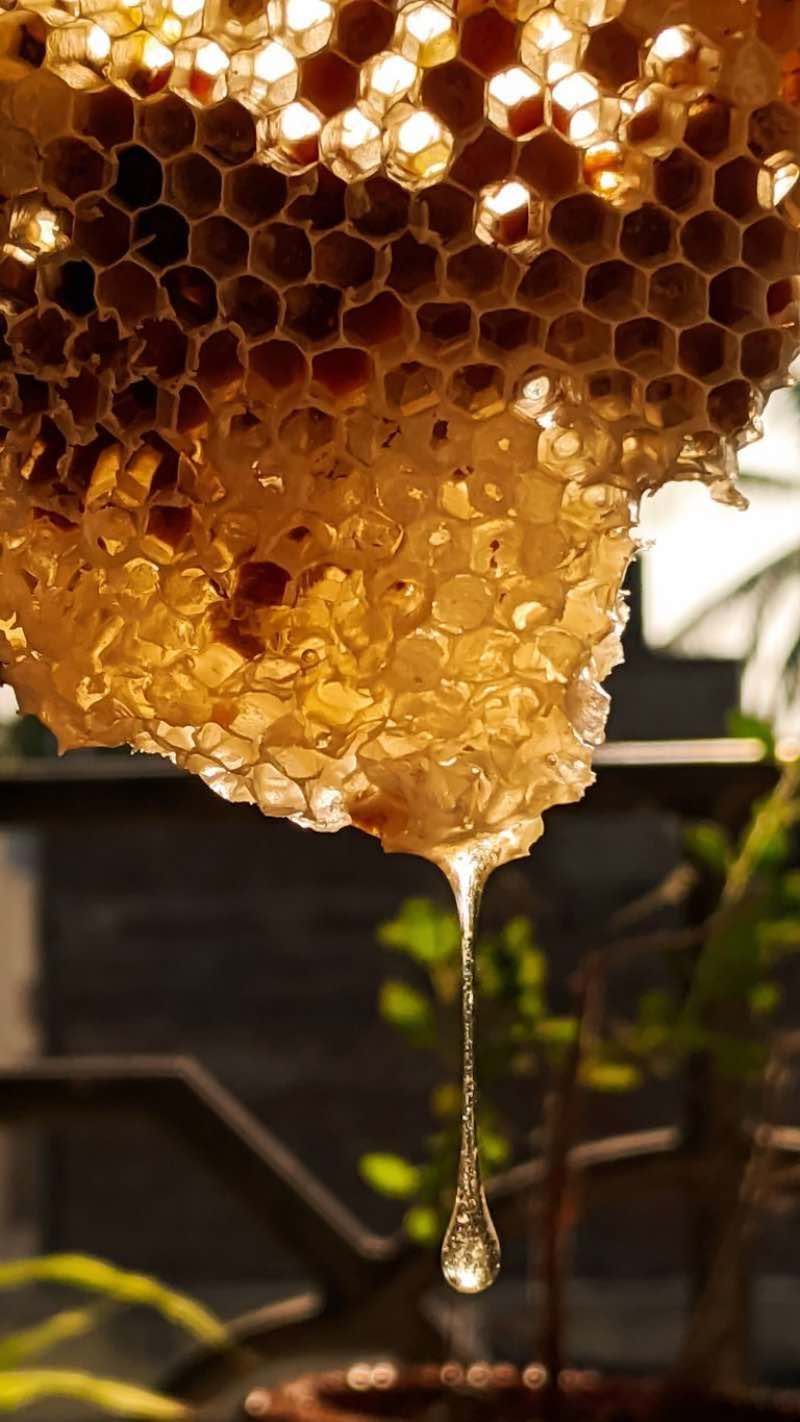Honeycomb is one of nature’s most remarkable structures, created by bees to store honey and raise their young. It is made up of hexagonal cells that are perfectly aligned to maximize space and efficiency. Honeycomb is not only a marvel of nature, but it is also a subject of fascination for scientists and researchers. In this post, we will explore the science behind honeycomb, including its structure, production process, mechanical properties, and mathematical significance.

Structure of Honeycomb
Honeycomb is made up of hexagonal cells that are perfectly aligned to maximize space and efficiency. The hexagonal shape is the most efficient shape for storing honey, as it allows for the maximum amount of honey to be stored using the least amount of wax. The cells are also perfectly aligned in a way that minimizes the amount of space between them. This is known as the “packing problem” and is an important mathematical problem that has been studied extensively.
The walls of the honeycomb cells are made of beeswax, which is produced by bees. Beeswax is a complex blend of organic compounds, including hydrocarbons, esters, and fatty acids. The honeycomb cells are lined with a thin layer of wax that helps to protect the honey from contamination.
Production Process of Honeycomb
Honeycomb is produced by bees in the hive. Bees collect nectar from flowers and bring it back to the hive, where it is converted into honey. The bees then store the honey in hexagonal cells made of beeswax, which is produced by the bees. The hexagonal shape of the cells allows for optimal storage and efficiency.
The production of honeycomb is a complex process that requires a high degree of coordination among the bees. Bees must work together to collect nectar, convert it into honey, and build the honeycomb structure. The construction of honeycomb requires a great deal of energy and resources, and it is estimated that bees must consume eight ounces of honey to produce one ounce of beeswax.
Mechanical Properties of Honeycomb
Honeycomb has remarkable mechanical properties that make it an ideal material for a wide range of applications. The hexagonal shape of the cells provides structural integrity, while the thin walls of the cells allow for flexibility and lightweight construction. Honeycomb is also highly resistant to compression and bending, making it ideal for use in construction and engineering applications.
The mechanical properties of honeycomb have been studied extensively by scientists and engineers. Honeycomb is used in a wide range of applications, from aerospace to automotive to construction. Its lightweight construction and high strength-to-weight ratio make it an ideal material for a wide range of applications.
Mathematical Significance of Honeycomb
The hexagonal shape of honeycomb cells has long been a subject of fascination for mathematicians and scientists. Hexagons are the most efficient shape for storing honey, as they allow for the maximum amount of honey to be stored using the least amount of wax. The hexagonal shape is also the most efficient shape for packing cells together, as it minimizes the amount of space between cells.
The mathematical significance of honeycomb has been studied extensively by mathematicians and scientists. The packing problem, which involves finding the most efficient way to pack cells together, has been studied extensively using honeycomb as a model. Honeycomb has also been used as a model for the study of cellular structures in biology and the study of crystal structures in materials science.
In conclusion, honeycomb is a remarkable structure that has fascinated humans for centuries. Its hexagonal shape, production process, mechanical properties, and mathematical significance make it a subject of fascination for scientists and researchers. From its use in the production of honey to its use in engineering and construction, honeycomb is a versatile and valuable material that has contributed to human advancement in countless ways.